
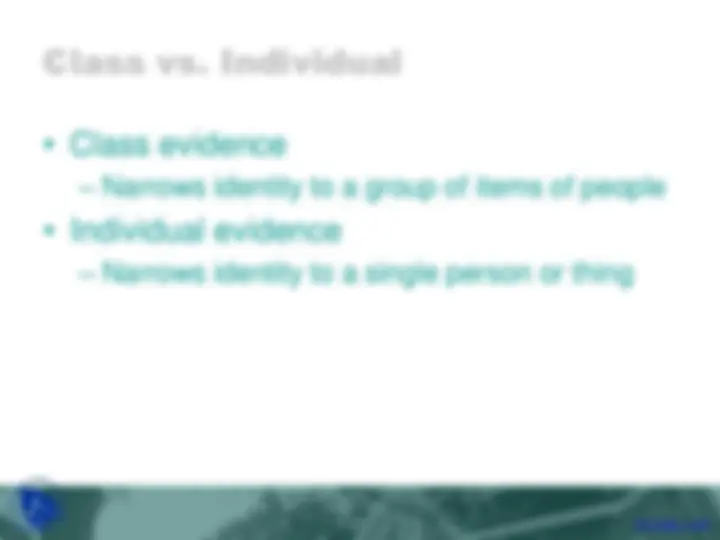
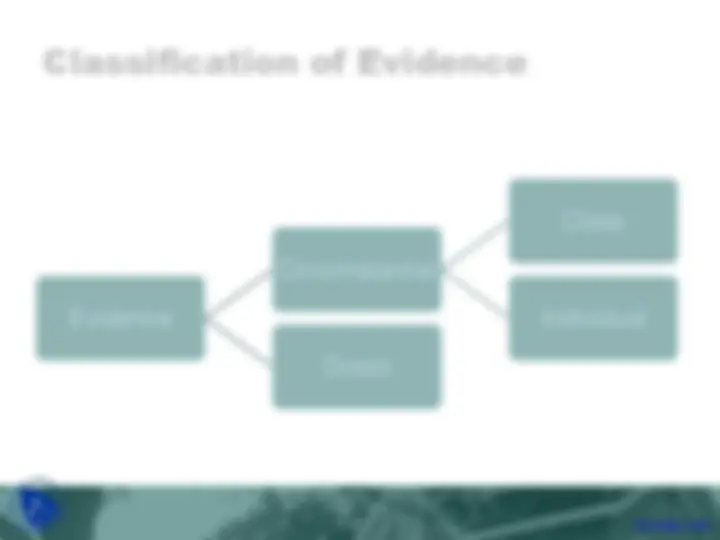
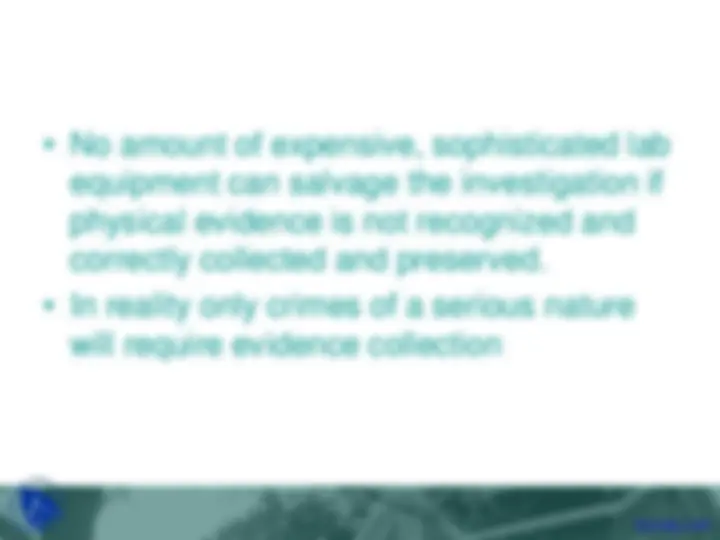
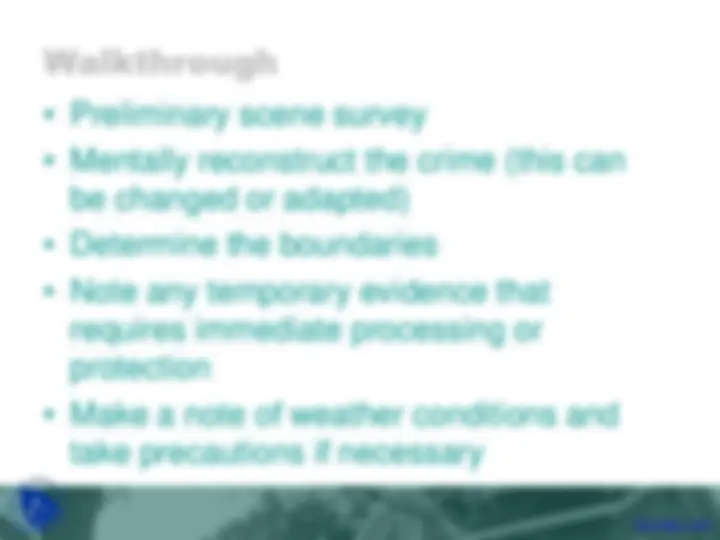
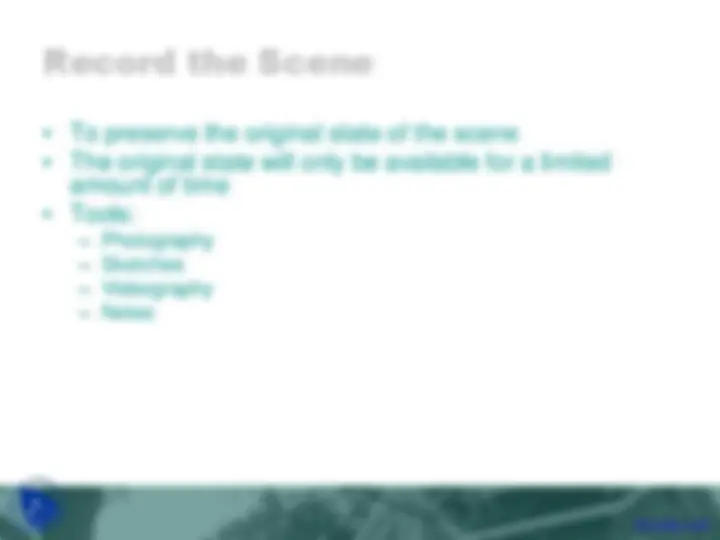
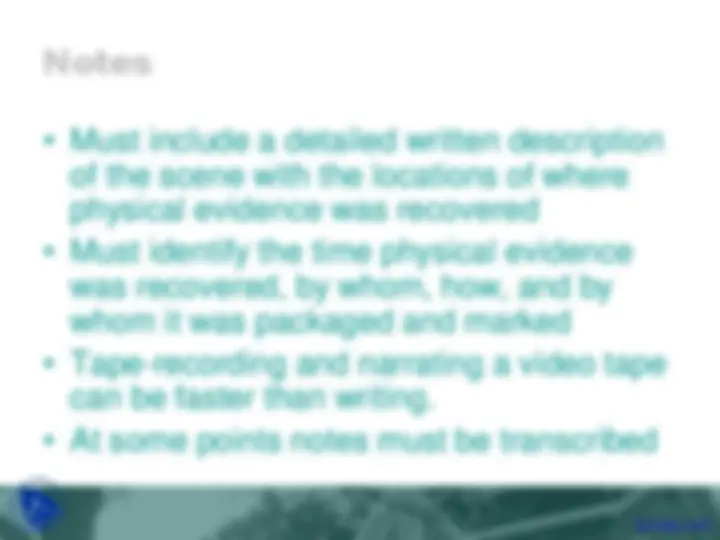

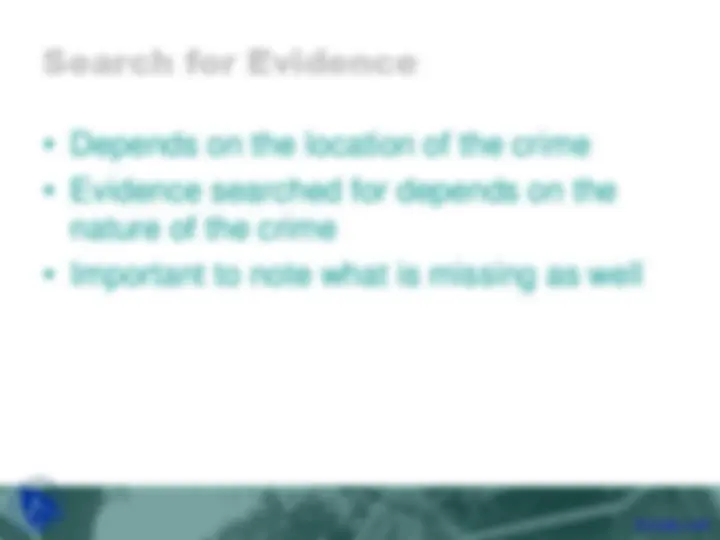
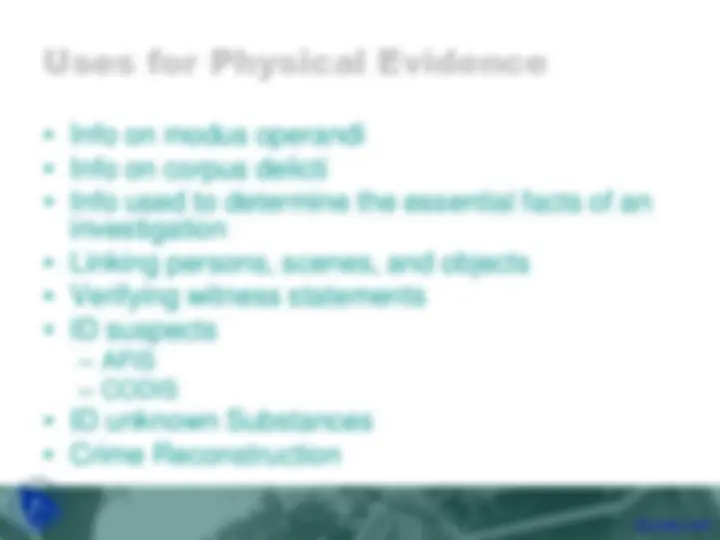
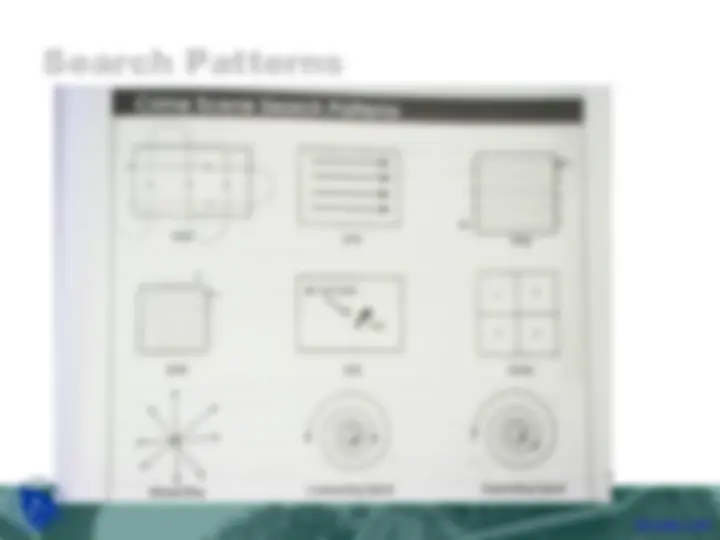
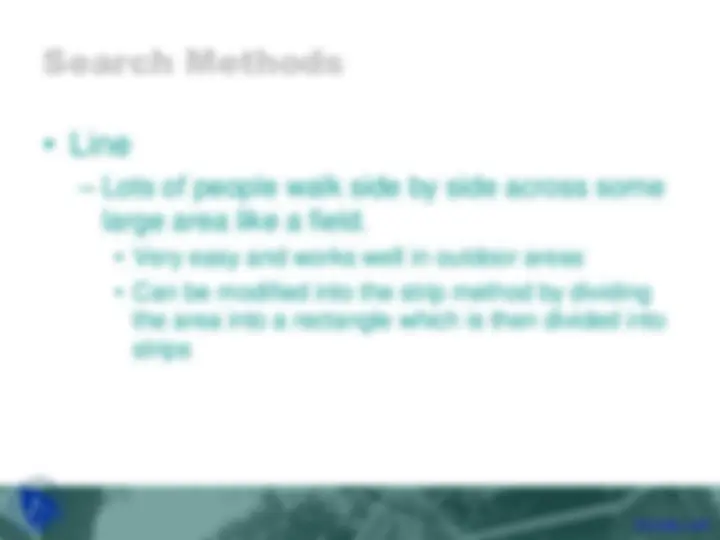
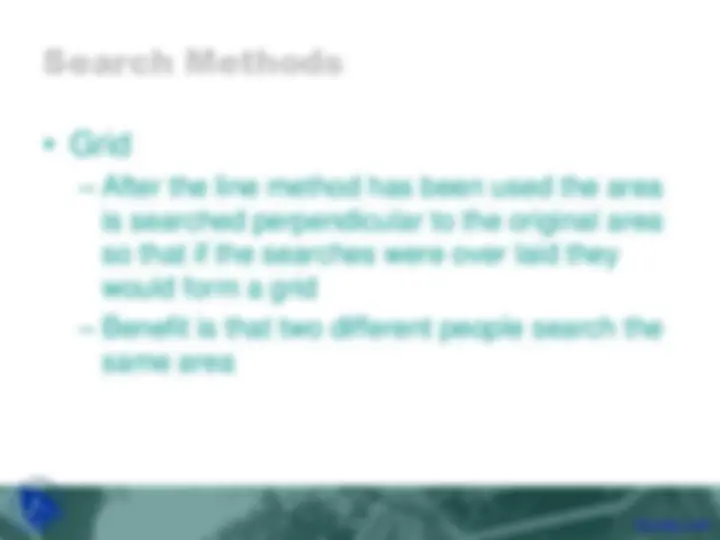

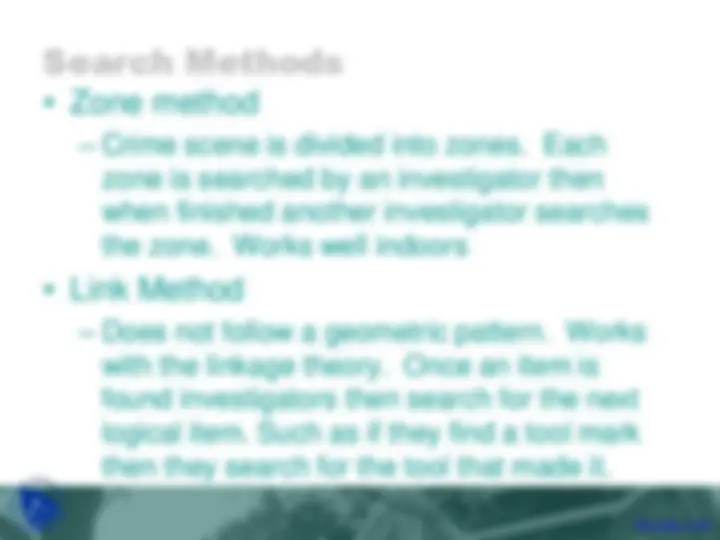
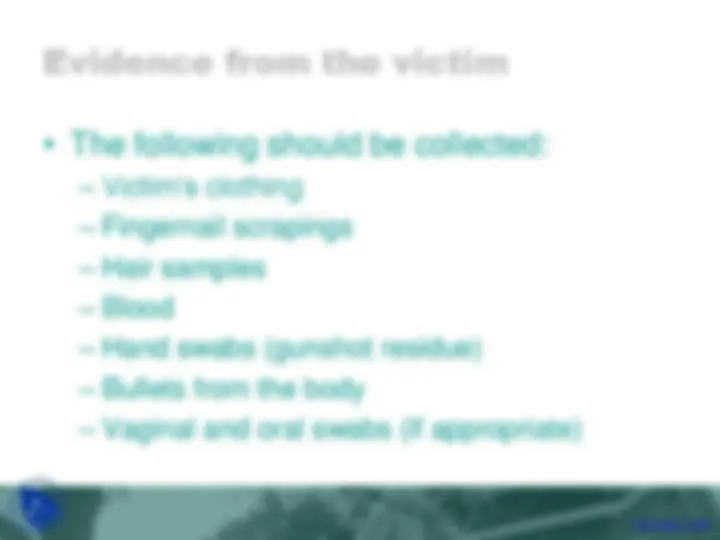
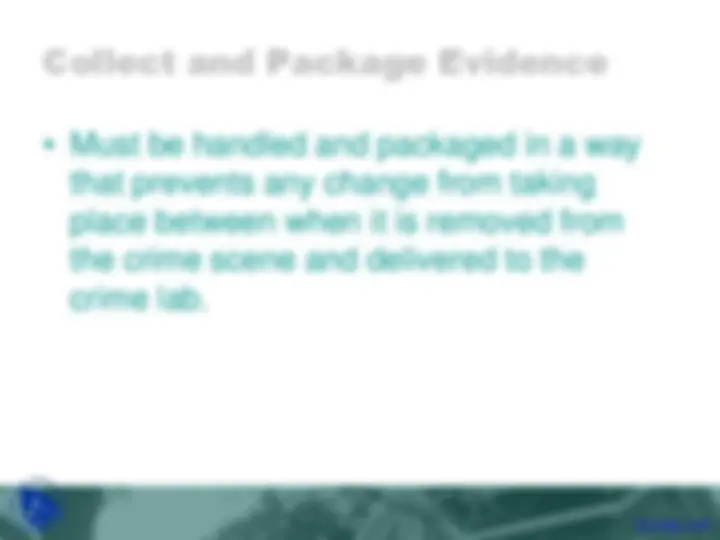
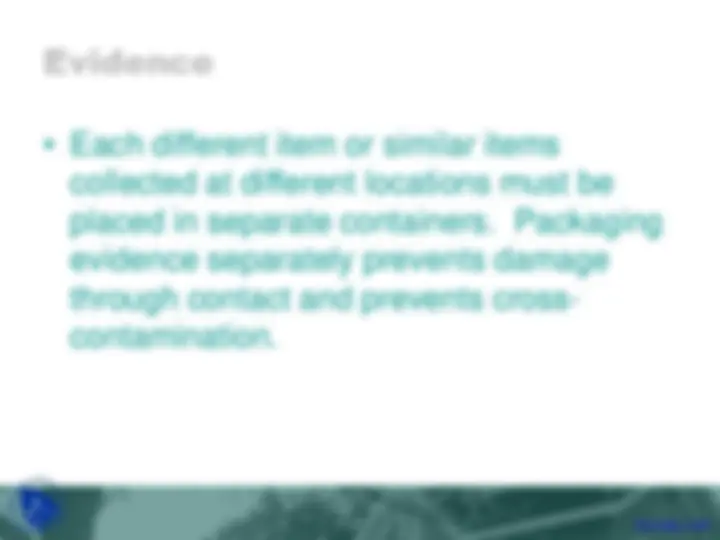
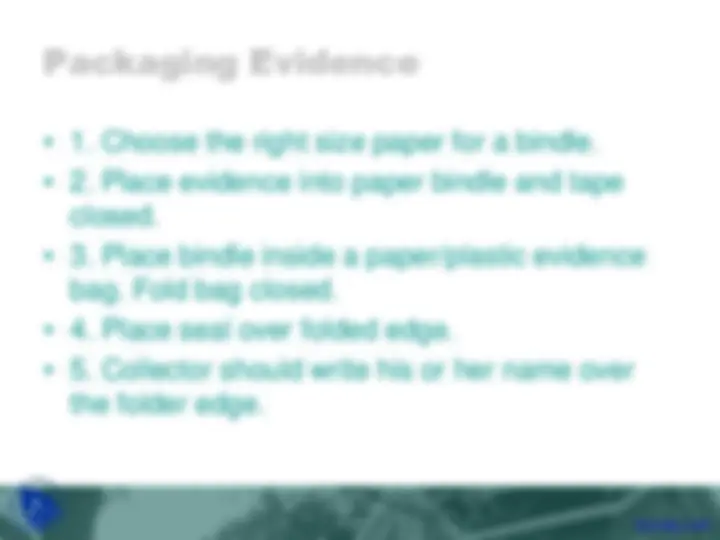



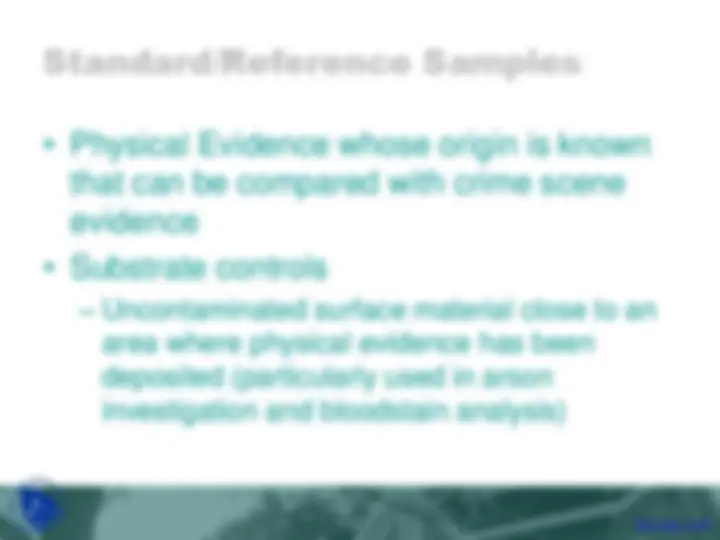
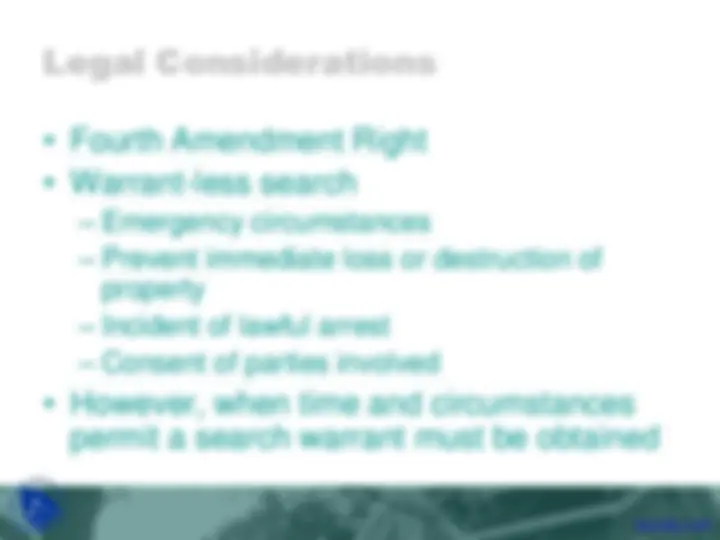
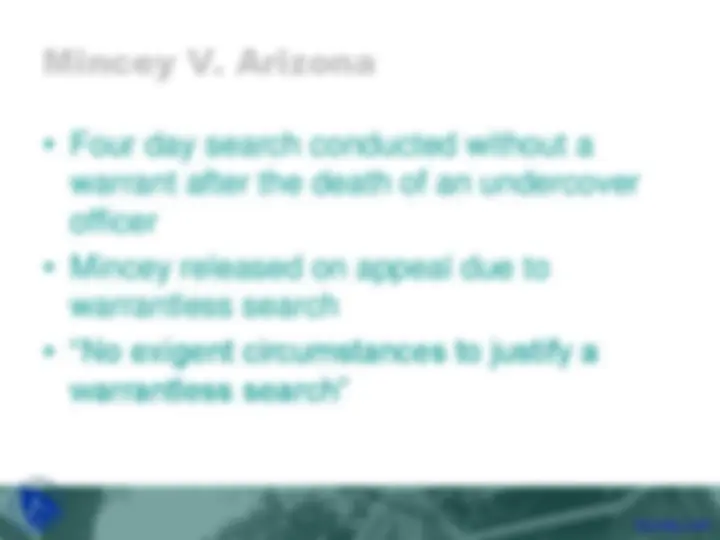
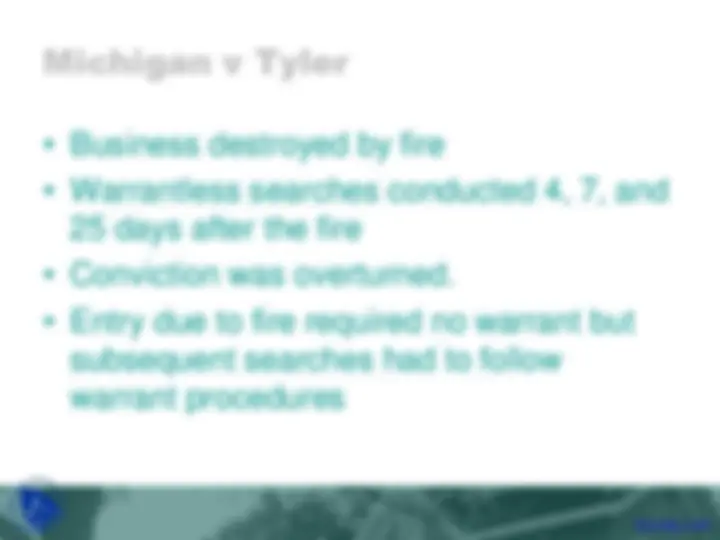


Study with the several resources on Docsity

Earn points by helping other students or get them with a premium plan


Prepare for your exams
Study with the several resources on Docsity

Earn points to download
Earn points by helping other students or get them with a premium plan
Community
Ask the community for help and clear up your study doubts
Discover the best universities in your country according to Docsity users
Free resources
Download our free guides on studying techniques, anxiety management strategies, and thesis advice from Docsity tutors
Forensic science (often shortened to forensics) is the application of a broad spectrum of sciences and technologies to investigate and establish facts of interest in relation to criminal or civil law. This lecture includes: Crime Scene, Direct, Types, Circumstantial, First Hand Observations, Confessions, Physical Evidence, Class Evidence, Individual Evidence, Narrows Identity
Typology: Slides
1 / 33

This page cannot be seen from the preview
Don't miss anything!


























Chapter 2
Evidence
Circumstantial
Class
Individual Direct